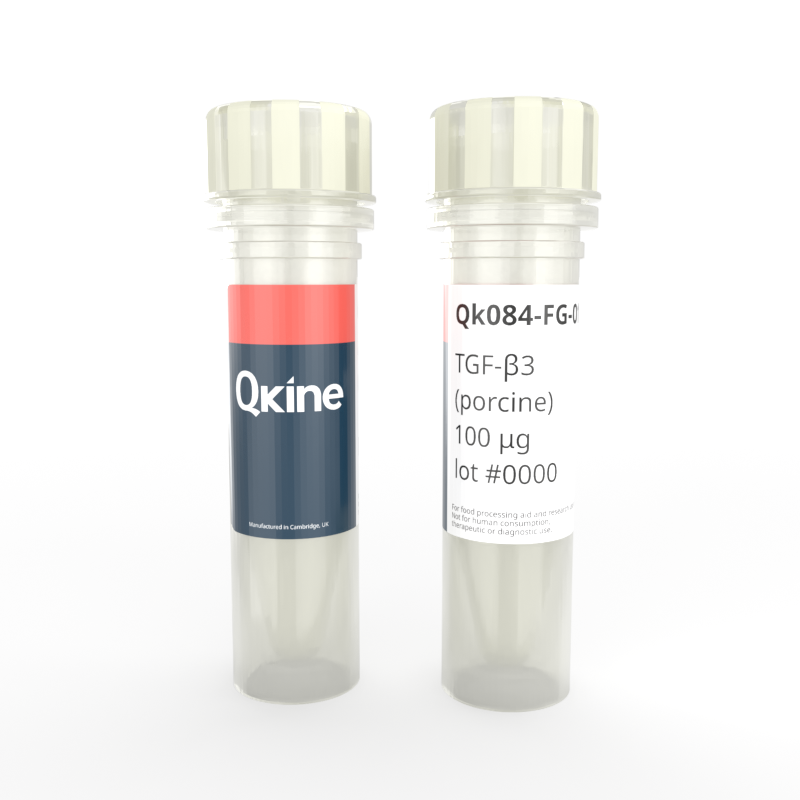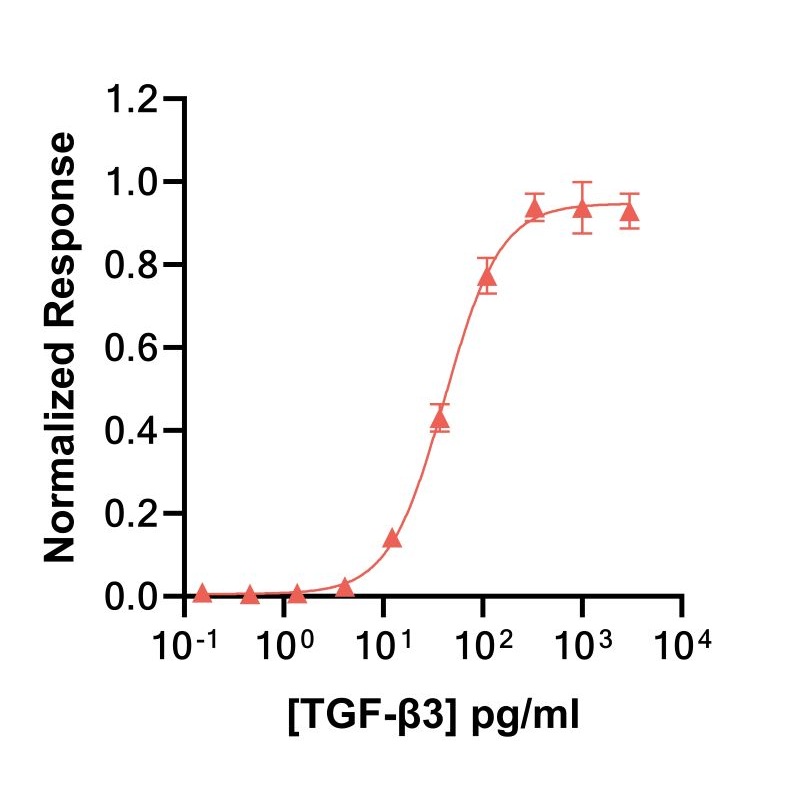Recombinant porcine TGF-β3 protein (Qk084-FG)
Porcine TGF beta 3 protein is a member of the transforming growth factor family, a family involved in regulating cell survival, proliferation and differentiation.
Qkine is dedicated to supporting the cellular agriculture industry by manufacturing high-purity and bioactive growth factors that are species-specific to cultivated cultures. Porcine TGF-β3 is used in cultivated meat pluripotent stem cell maintenance medias, such as Beefy9 media.
Porcine high quality food grade TGF beta 3 is a protein dimer that is animal-origin free (AOF) and carrier-protein free (CF).
Qkine high quality food grade products are intended solely for use as food processing aids, ex vivo cell manufacturing and research use. Not for direct human consumption, therapeutic or diagnostic use.
The authorization of novel foods, including the use of growth factors as food processing aids, is regulated by regional government agencies. The use of our products as food processing aids in novel foods requires the end-user to obtain the necessary regulatory approvals.







What others are saying
There are no contributions yet.